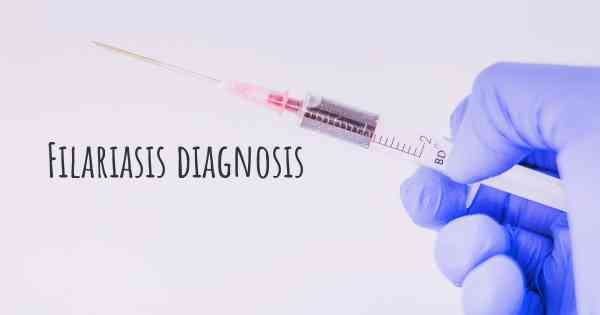4
How is Filariasis diagnosed?
See how Filariasis is diagnosed. Which specialists are essential to meet, what tests are needed and other useful information for the diagnosis of Filariasis

Filariasis is a parasitic disease caused by infection with filarial worms. It is prevalent in tropical and subtropical regions, particularly in Africa, Asia, and the Pacific. Diagnosing filariasis involves a combination of clinical evaluation, laboratory tests, and imaging techniques.
Clinical Evaluation: The first step in diagnosing filariasis is a thorough clinical evaluation. A healthcare professional will assess the patient's medical history, symptoms, and exposure to areas where the disease is endemic. Common symptoms of filariasis include swelling of the limbs, fever, pain, and skin lesions.
Laboratory Tests: Several laboratory tests are available to confirm the presence of filarial infection. The most commonly used test is the microscopic examination of blood samples. A drop of blood is collected and examined under a microscope to detect the presence of microfilariae, which are the larval stage of the filarial worms. This test is usually performed during the night when the microfilariae are more active in the bloodstream.
Another diagnostic test is the detection of specific antibodies against filarial antigens in the blood. This can be done using techniques such as enzyme-linked immunosorbent assay (ELISA) or immunochromatographic tests. These tests are useful in detecting chronic infections and can be performed even when microfilariae are not present in the blood.
Imaging Techniques: In some cases, imaging techniques may be used to diagnose filariasis. Lymphatic filariasis, a common form of the disease, can cause damage to the lymphatic system. Imaging techniques such as ultrasound or lymphoscintigraphy can be used to visualize the lymphatic vessels and identify any abnormalities or blockages.
It is important to note that diagnosing filariasis can be challenging due to the periodicity of microfilariae in the blood. The presence of microfilariae may vary throughout the day, and multiple blood samples may be required to increase the chances of detection. Additionally, in cases of low-level infections or during the early stages of the disease, laboratory tests may yield false-negative results.
In conclusion, diagnosing filariasis involves a combination of clinical evaluation, laboratory tests, and imaging techniques. Microscopic examination of blood samples and the detection of specific antibodies are the primary methods used to confirm the presence of filarial infection. Imaging techniques may be employed to assess damage to the lymphatic system. Early diagnosis and prompt treatment are crucial in managing filariasis and preventing complications.
Diseasemaps








